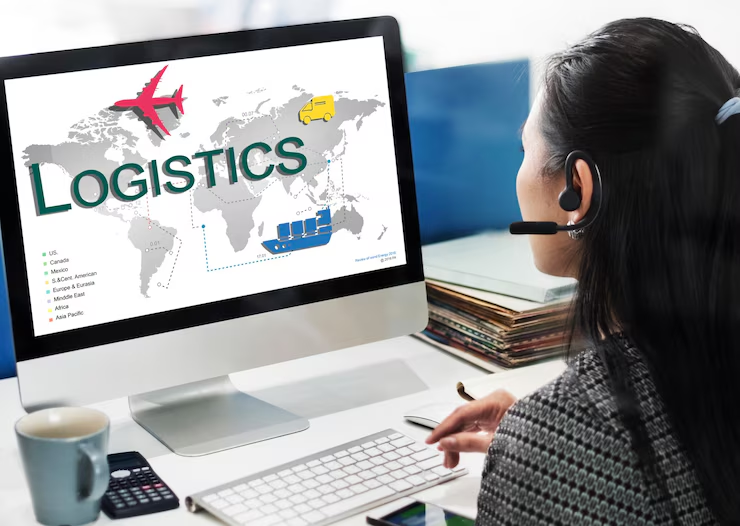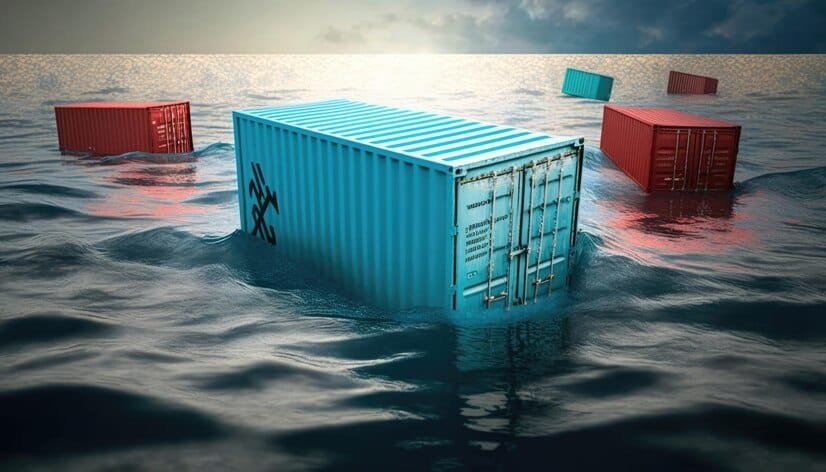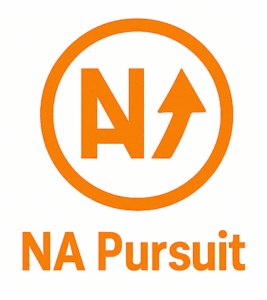Overview: Cargo Insurance: Is the Same Marine Insurance Provider Are You Hoping is Your Friend Actually Your Enemy?
Sometimes, the world of cargo insurance feels like a 24/7, insurance tumultuous ocean. You have goods traveling the world, complex supply chains and a steady stream of potential threats. This significant responsibility falls upon cargo insurance professionals and business leaders tasked with reviewing marine insurance and arranging appropriate levels of coverage to minimize potential financial exposure. But what if your existing insurance policy — painstakingly created and purchased — may not be providing the protection you believe it is? This is a question many are not likely to think through, unfortunately some providers, intentionally or not, fail.
This is not to create doubt but to energize you. We’ll guide you through an easy step-by-step assessment to ensure your marine insurance works for you, not against you:
- Know Your Policy: (Image: A magnifying glass on the document). First and foremost, actually know the details of your existing policy. So don’t just take your broker’s word for it. We’ll point out the clauses you need to read carefully — such as exclusions, limitations and claims processes — with plain language free of confusing jargon.
- Evaluate Your Current Needs (Image: A goods carrier braving high seas) Did your needs change since you last reviewed your policy? New offerings, new routes, even new cargo handling — all need to be reimagined in an insurance context. We’ll help you identify whether you’re currently covered (and for how much) and help identify potential risks you might not have considered.
- Look Into Your Broker: (Image: A hand shaking another hand). Is your broker really fighting for your best interests? Are they knowledgeable about the industry? We will provide you the questions to listen for from your broker, any broker should be proactive and responsive, providing regular feedback.
- Look for the biggest agreed-upon factors to determine price and risk (Video: fireplace log comparison table) We’ll talk about ways to seek out competitive quotes, how to evaluate those quotes objectively, how to compare ‘apples to apples’ coverage and not just bottom line price.
We will give you the tools to unlock whether your cargo insurance is stabbing your business in the back or protecting you like it should, by the end of this post. Let’s chart our course through these uncertainties and reach the smoother, more secure seas.”

Insight into the Cargo Insurance Industry
Cargo insurance covers goods in transit by ship, air, land or a combination thereof. This is vital for companies engaged in global trade and logistics.
Trending Forces in the Cargo Insurance Space
Here are the main trends that have emerged, arranged by type for ease of reference:
The Good News: Where There Are Winds of Change
Trend 1: Technology Development (IoT, AI, Blockchain):
Root Cause: Hungry connected devices (IoT), AI, and blockchain disrupt logistics Real-time tracking, predictive analytics and secure data sharing are becoming the norm.
- Impact:
- Pros: More precise risk assessment for insurance companies (lower claims costs). Faster claims processing. Tailored insurance products based on real-time risk profiles.
- For example: Firms are deploying IoT sensors to track temperature-sensitive shipments, leading to less spoilage, and ultimately, lower premiums.
=> Actionable Insight: Strategists must invest in digital solutions that assimilate with such technologies. Work with tech companies to create disruptive insurance products for clients utilizing these solutions.
Trend 2: Expansion of E-commerce & Cross-Border Trade:
- Underlying Factor: Cargo insurance is in the face of an explosion of e-commerce and an ever-burgeoning global trade.
- Impact:
- Positive: Increase in the size of the market for cargo insurance providers and brokers. Even more opportunities to connect with potential customers online.
- For example, e-commerce platforms are embedding cargo insurance options directly into their checkout flow.
There are two key take away points, Companies need to establish partnerships with e-commerce platform, develop their capabilities to meet demand.
2.Adverse Trends: Challenges Requiring Adaptation
Trend 3: Increasing Supply Chain Disruptions
- -Underlying Factor: Geopolitical instability, natural disasters, pandemics, and cyberattacks cause more frequent disruptions within the supply chain.
- -Impact: Adverse – higher claim frequency. Increased complexity of risk assessment. More claims adjusting in difficult circumstances with increased scrutiny. The example is the blockage of the Suez Canal in 2021 that shattered the fragile global supply chains and led to more claims.
- -Actionable insight: Develop more flexible, comprehensive insurance products; secure cover for potential disruptions. Invest in data and risk analysis capabilities to be able to assess the pricing of these events that will undoubtedly occur in one form or another.
Trend 4: Heightened Cyber Threats
- -Underlying Factor: more digital systems used in logistics mean that the supply chain is more prone to cyberattacks.
- -Impact: Adverse – potential for large cargo theft, data breach, ransom demands, operation disruptions. The example is hackers attacking logistics companies and getting hold of cargo manifests and orchestrating its theft.
- -Actionable insight: Offer cyber insurance as add-ons for supply chain and cargo risks, ensure robust cybersecurity protocols. Educate clients about cyber threats and implement preventive methods, including insuring with you.
Trend 5: Increased Regulatory Scrutiny and Compliance Requirements
- -Underlying Factor: more regulation by the governments to promote trade, safety, and environmental sustainability.
- -Impact: Adverse – increase in administrative burden for insurers, which can lead to a higher risk of non-compliance and penalties. The example is the strict enforcement of hazardous goods regulations during a claim.
Conclusion & Recommendations
The cargo insurance market is subject of change and development, creating both opportunities and threats. In order to succeed, strategists must:
- Alongside Technology: Leverage Digital Tools and Data Intelligence
- Fewer: Generate applicable and variable insurance products in a unique market.
- Focus on Risk Management: Finally, Prepare for Supply Chain Disruption and Cyber Threats: Develop a strong risk management strategy to address supply chain disruptions and cybersecurity threats.
- Stay Compliant: Be proactive and keep up with regulatory changes that might lead to expensive penalties and disputes.
- Forge Strategic Collaborations: Collaborate with technology companies, e-commerce platforms, and other industry players.
With insights into these trends, businesses can successfully manage the complexities of cargo insurance, reaching long-term goals.
- Healthcare (Pharmaceuticals): A pharmaceutical company transports temperature-sensitive vaccines from a manufacturing plant in India to distribution centers in Europe. The shipment needs certain temperature controls. If a refrigeration unit fails en route, for mechanical reasons, and the vaccines go bad, cargo insurance covers the loss, the value of the entire shipment, — and so on. This encompasses not only the price of the vaccines themselves, but also disposal and replacement costs. Actionable Insight: Healthcare firms need to ensure that their cargo policies have specific sub-clauses that address temperature-controlled goods and that coverage is extended for consequential losses beyond the value of the goods.
- Pipe: Electronics A tech firm is importing a container of high-value smartphones from China. The boat gets wrecked in a storm when you take it off its moorings. Electronics get ruined due to water damage. Cargo insurance will cover the funds of the damaged units to be repaired and / or replaced This covers the cost for the dispatch of repair personnel (if needed) or complete replacements sent out from the manufacturers. Actionable Insight: Tech companies would be well served to lean toward “all-risks” policies that extend coverage for a wider array of potential perils, including damage from natural events, as technology products tend to be prone to water and impact damage.
- Automotive (Car Parts): An automotive manufacturer is sourced engine components by various suppliers globally. A container of those parts gets delayed because it has to clear customs and it gets held at a port, incurring additional storage fees. The additional storage costs are covered under the cargo insurance policy and such policy also covers however loss due to financial penalties because of delayed arrival of components and therefore manufacturing getting stalled. Takeaway — Automotive policies must anticipate delays and address relevant expenses: detention, storage, etc., that are so important for “Just In Time” supply chains.
- Manufacturing (Raw Materials): A textile company purchases cotton in bulk from farms abroad. Once they arrive, it turns out that the cotton has been compromised in a fire in the shipping container. The distributor files a claim under business interruption and the manufacturer files under their cargo insurance and get compensated for the destroyed goods and are able to get material to replace what was destroyed without any significant downtime in their production schedule. End Notes: Manufacturing companies need to adequately protect cargo against damage to bulk raw materials, along with clauses that mandate timely claim settlement in order to avert extended manufacturing downtime.
- Property: An example is a retail business importing clothing from an overseas textile producer. During unloading at the warehouse, a few boxes are torn by a forklift. In this case, you want to get compensated not just for the cost of the damaged clothing, but also the cost of repackaging and reselling the partially damaged goods. Actionable Insight: Retail firms should provide coverage at every step of the cargo transit, including the unloading phase. The clauses should help recover some value for partially damaged goods.
- Enhanced Digital Platforms & Data Analytics (Organic): Companies are going big on friendly web portals. Such platforms enable brokers and their clients to obtain quotes, manage policies and file claims rapidly and transparently. Consider it an e-commerce experience for insurance. Emphasis is placed on automating processes, minimizing human involvement, and embracing data analytics to provide customized risk assessments and premium calculations. For example, one firm has rolled out an AI-enabled risk scoring tool that leverages up-to-the-moment shipping information to identify which shipments are likely to turn into problems, resulting in improved underwriting decisions.
- Strategic Partnerships & Ecosystem Expansion (Inorganic): Cargo insurers are no longer working within a silo anymore and are looking for partnerships with logistics providers, tech companies, and even e-commerce platforms. The goal is to embed insurance solutions directly into the supply chain. One insurer partnered with a freight forwarder to offer cargo insurance quotes as part of the booking process, so it becomes an integrated step in the shipping workflow. This “plug-and-play” strategy is essential to unlocking a larger customer base.
- Emphasis on Organic Solutions (Sustainable & ESG-Compliant) With the growing emphasis on sustainable practices, many insurers are creating policies that reward environmentally safe shipping. This includes discount incentives for companies using greener modes of transport, or those implementing strong sustainability initiatives in their supply chains. In 2021, one insurer launched a “Green Cargo” policy, offering lower premiums for shipper using biofuels or electric vehicles, aligning itself with a growing trend in more responsible business practices.
- Acquisition of“niche”technology & data firms (Inorganic): Innovation has been turbocharged with some insurers acquiring or investing in IoT (Internet Of Things), advanced analytics companies, blending artificial intelligence and blockchain These acquisitions inject useful technology and talent that improve risk management functionality. For example, one insurer recently bought a company that offers real-time cargo visibility via GPS and temperature sensors, enabling it to take a proactive approach to risk management and improve claims management.

Outlook & Summary
Cargo insurance, which is an integral part of the wider marine insurance landscape, is set for a major overhaul over the next 5 to 10 years. Here’s what to anticipate, and what you can keep in mind from this conversation:
- Transparency on the Rise: There will be increased demand for policy terms that are their policy terms that are clear and easily understandable Hidden terms and arcane legalese will be increasingly intolerable.” We could easily compare policies as we do with cell phone plans.
- More Efficient Systems using Technological Integration: Data analytics, AI, and IoT devices will become essential. Think of real-time cargo tracking that leads to more precise risk assessment and, for safe shipments, potentially lower premiums.
- Proactiveness in Risk Handling: There will be a gradual transition towards preventing risks rather than just processing claims. Insurers will provide tools and services to prevent losses in the first place.
- Greater Customization: Policies that are “one-size-fits-all” will no longer apply. You shouled expect insurers to provide customized solutions, depending on your cargo type, your routes and risk appetite.
What is the key takeaway from this article? The active scrutiny of your cargo insurance provider is essential. They are not necessarily looking out for your best interests. It means that you need to make sure that your policy is genuinely covering you, that it is open and proactive, and that it meets your needs. Just like a ship needs the proper captain to steer the seas, your cargo insurance policy needs to be the right one to put you through every uncertainty in the global supply chain.
Against this back drop, do you feel sure that your current cargo insurance policy really meets your needs and is actually designed to help you avoid problems, or could your insurer unwittingly set you up for failure?






